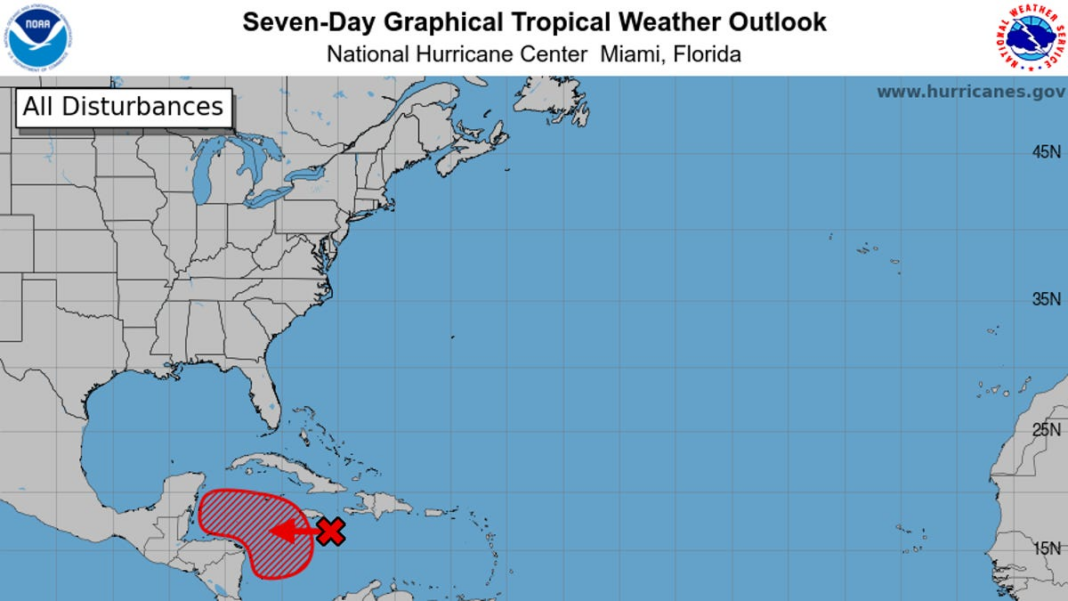Storm tracker: Hurricane Sara may form in November; is US in path?
The hurricane season is still active, and meteorologists suggest that a system currently in the Caribbean might develop into Hurricane Sara next week, potentially moving along an uncertain route within the Gulf of Mexico through late November.
The National Hurricane Center reported that, as of Tuesday, they are monitoring a tropical wave situated in the central Caribbean Sea, which is generating “an area of disorganized showers and thunderstorms.”
The agency believes that environmental conditions are favorable for this wave to intensify, indicating that a tropical depression could likely form by the end of the week as it slowly drifts westward into the western Caribbean Sea.
By early next week, the system is anticipated to begin moving northwestward gradually.
The NHC has advised, “Areas throughout the western Caribbean Sea should keep an eye on this system,” noting an 80 percent probability of it developing over the next week.
What direction will the system take? Is Hurricane Sara likely?
Forecasting models present a wide array of potential outcomes for the system’s eventual strength and trajectory, with some scenarios predicting the emergence of Hurricane Sara in the Gulf of Mexico next week.
According to AccuWeather, wind shear that typically hampers storm development will likely hinder the initial northward movement of the system in the Caribbean. However, this obstacle may dissipate during the third week of the month, allowing any developing tropical storm to progress northward. Thus, residents in South Florida and the Keys should remain alert, stated meteorologist Alex Sosnowski from AccuWeather.
Alternative forecasts indicate a slow movement towards Central America, while others suggest a path deviation towards the open Atlantic, away from the U.S.
November hurricane forecast indicates more storms could arise after Rafael
Despite the season nearing its end, meteorologist Phil Klotzbach from Colorado State University told YSL News last week that the conditions seem favorable for one or two more storms.
Hurricane Rafael made landfall in western Cuba last Wednesday as a Category 3 hurricane, impacting the Artemisa province with sustained winds reaching up to 115 mph and causing power outages across the island. As Rafael moved into the Gulf region, parts of western Cuba experienced “life-threatening storm surges” and flash flooding, according to reports from the hurricane center last Wednesday evening.
This season has already proven unusually busy, with 17 named storms, surpassing the average of 14. Among these storms, 11 were classified as hurricanes, including the devastating Hurricanes Helene and Milton. The official end of hurricane season is November 30, though tropical storms can occasionally develop in December.
According to Klotzbach, while there aren’t any definitive indicators at the moment, the overall conditions seem favorable for increased tropical cyclone activity following Rafael.
He also mentioned that large-scale global climate patterns, such as the Madden-Julian Oscillation (MJO), support the formation of storms. The MJO is a disturbance in the atmosphere that moves eastward, bringing shifts in clouds, rainfall, winds, and pressure across the tropics, repeating its cycle every 30 to 60 days, as described by the National Oceanic and Atmospheric Administration. It significantly influences worldwide weather, including hurricane development.

